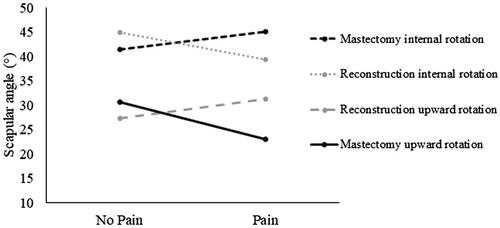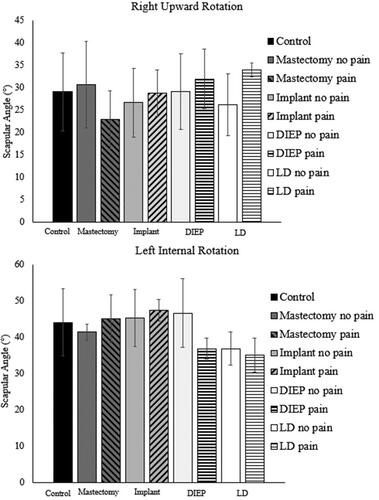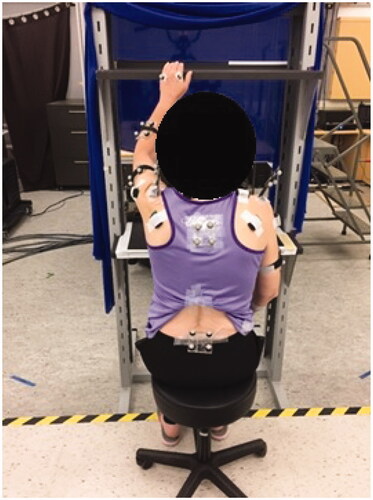Figures & data
Figure 2. Interaction plot of scapular kinematics for the pain and no pain groups. Upward rotation values are from the right side, while internal rotation values are from the left side. For the mastectomy group, those with pain had lower upward rotation and higher internal rotation. The opposite pattern was found in the reconstruction group.

Figure 3. Peak right upward rotation (top) and left internal rotation (bottom) presented with reconstruction groups split by surgery types and pain status. Reconstruction types were grouped together for analysis due to small sample sizes for each type. Error bars represent standard deviation. Mastectomy: mastectomy-only; implant: subpectoral implant; DIEP: deep inferior epigastric perforator; LD: latissimus dorsi flap.

Table 1. Participant characteristics [mean (95% CI)] for all five combinations of breast cancer treatment and presence of pain.
Supplemental Material
Download MS Word (46 KB)Data availability statement
The data that support the findings of this study are available from the corresponding author, [SK], upon reasonable request.

